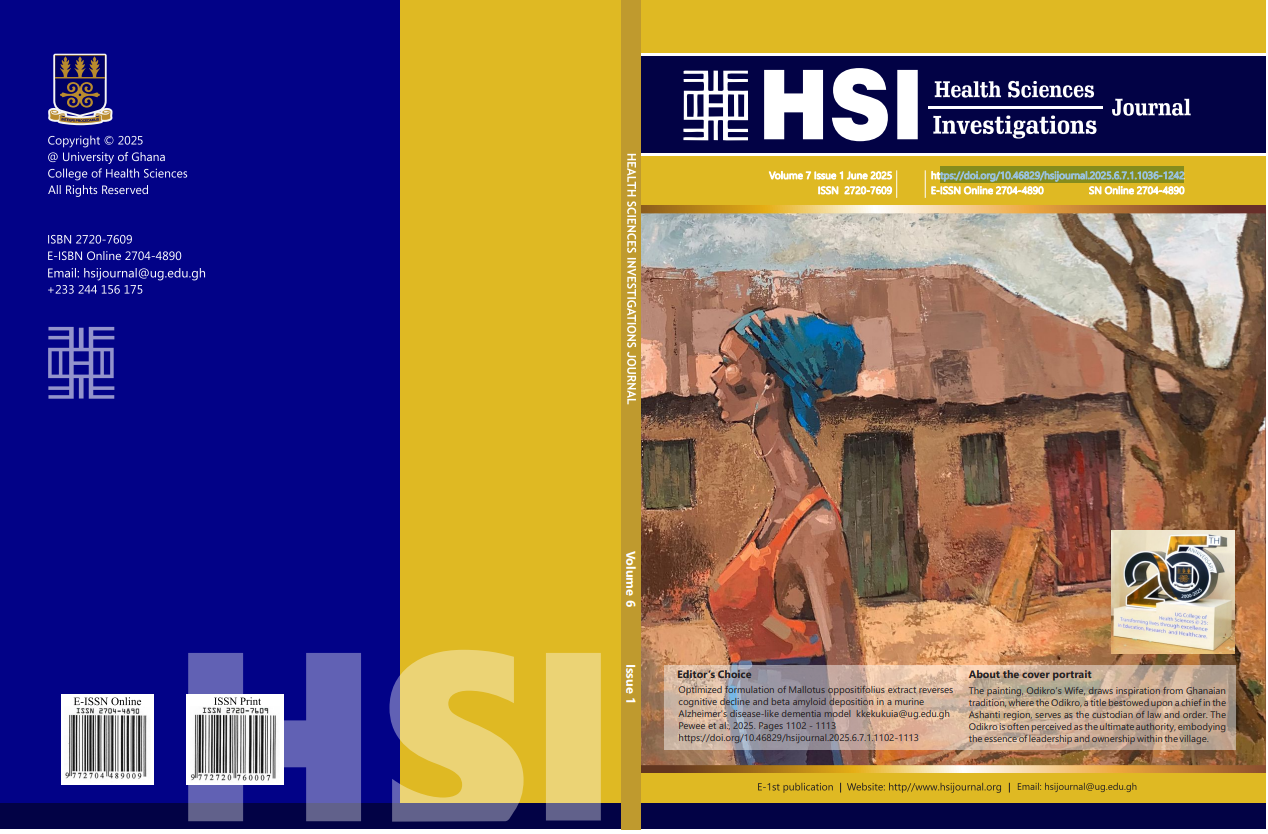Economic cost of oral conditions to patients attending the dental department of the Korle Bu Teaching Hospital, Ghana
Economic cost of oral conditions to patients attending the dental department of Korle Bu Teaching
Abstract
Background: Providing and utilising oral health care services are essential to achieving a high quality of life. However, oral conditions present both physical and economic burdens to individuals, households, and governments.
Objective: This study sought to estimate the economic costs incurred by patients accessing oral health services at the Korle-Bu Teaching Hospital in Ghana.
Methods: A cross-sectional cost-of-illness study was conducted at the Korle Bu Teaching Hospital, involving 224 participants. A structured questionnaire was used to collect data on direct and indirect costs. Intangible costs were assessed using a 5-point Likert scale. Descriptive statistics were employed in summarising the costs. Sensitivity analysis was performed with 3%, 5%, and 7% variations in medication costs and wage rates. Differences in mean costs across socioeconomic statuses were analysed using independent t-tests and one-way ANOVA. P < 0.05 was considered statistically significant.
Results: The estimated total economic cost was GHS 532,154.06 (US$ 44,346.17). The estimated annual average direct and indirect cost of oral health services were approximately GHS 2,129.98 (US$ 177.50) and GHS 245.70 (US$ 20.48), representing 89.7% and 10.3% of the total economic cost, respectively. Sensitivity analysis revealed a varied increase in total costs, with variations in medication costs and wage rates. Intangible cost was found to be low, with many patients experiencing no to mild burden.
Conclusion: The economic burden of oral health on patients is significant, particularly in terms of direct costs. There is a need for policymakers to develop policies and interventions to mitigate the costs of oral health care. The National Health Insurance Authority should consider expanding insurance coverage for more oral conditions to alleviate the economic burden and improve access to care.


